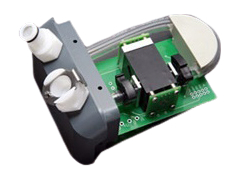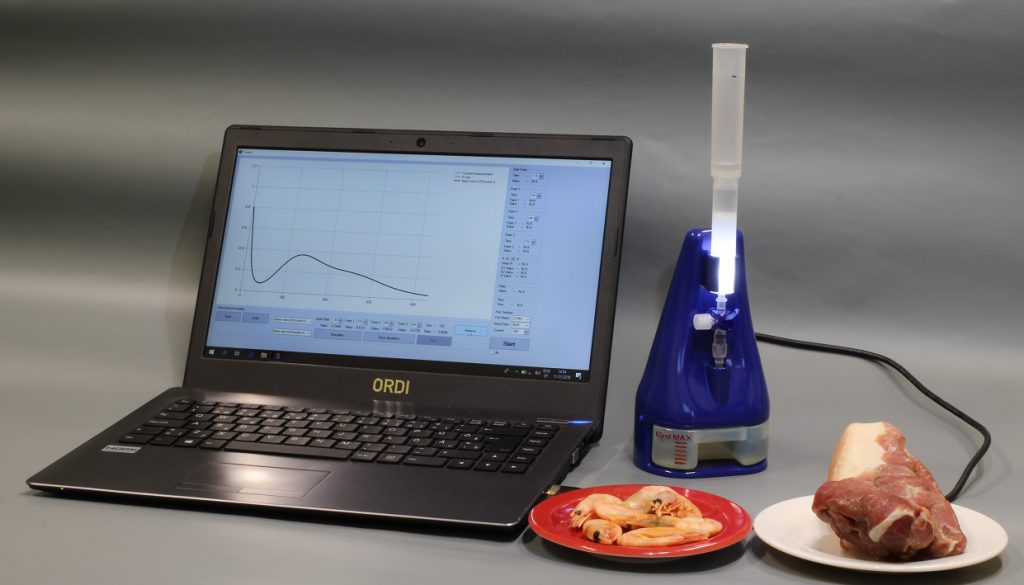Products

DiaSens
DiaSens is an optical sensor that utilizes optical spectrophotometric method for the measurement of light absorbance of urea.
DiaSens uses ultraviolet light that is absorbed by molecules present in spent dialysate to measure the effectiveness of the dialysis process. The principle behind the sensor lies in the fact that molecular concentration in the dialysate is linearly related to the molecular concentration in blood, thus allowing the estimation of the concentration of urea in the bloodstream.
DiaSens measures both Kt/V and URR values directly without any separate calculations and does not require patient’s body volume for an accurate display of results. As opposed to competitive methods that generally measure Kt/V value once every 25 minutes, DiaSens performs measurements every 6 seconds, allowing an elaborate treatment map to be created. Information provided by the treatment map is essential for the assessment and estimation of the quality and stability of the treatment.
DiaSens sensors are not sold out-of-the-box as these are always custom-fitted based on specific applications.
DiaSens does not require patient's body volume for an accurate display of results.

Food freshness sensor
Our food freshness sensor allows to determine the true freshness levels of meat and fish.
Determining the freshness of a product is performed by measuring the well-known nucleotide freshness indices Ki, Fr, H with possible extrapolation to indices K, P and Q. All these markers are suitable for early spoilage prevention in comparison to indicators used for determining already spoiled products. The method is based on the principle of combined Fast Protein Nucleotides Liquid Chromatography (FPNLC). The device is calibrated by means of liquid chromatography, mass-spectrometry and nuclear magnetic resonance. The method and the device are patent-pending.
The following tests and assessments can be performed with this unit: the beginning to spoil or spoiled food products, control whether fish or meat were frozen rapidly with preservation of absolutely fresh status or not, device helps also to prevent too early rejection of good-to-eat foodstuffs, helps to find out fish or meat of freshness suitable for high cuisine, for rich in Inosine monophosphate (IMP) umami dishes, etc., determine residual shelf time for fish and meat with non-absolute freshness, use of device substantiates instrumentally taste tests performed by the sensory teams and minimises the risk of errors, total protein determination can also allow to assess freshness of vegetables and fruits, the method and device can be useful in research work on the freshness recovery phenomena in temperature-processed meat.
The duration of the test procedure with the food freshness sensor is 10-15 minutes.

QSens
The QSens sensor measures optical properties of liquids directly from the fluid stream.
The sensor can be used to monitor the quality of drinking water as well as the condition of wastewater. Contamination with nitrates and dissolved organic materials (DOMs) is a strong indicator of water purity and with the QSens UV sensor this concentration can be determined with great accuracy.
In absorption geometry we are using UV LEDs with up to 4 different wavelengths and a SiC photodetector. In the fluorescence scheme we are using UV LEDs for excitation and offer 2 types of detectors: a MPPC (multi pixel photon counting) made up of a set of avalanche diodes or a fully intergrated CCD spectrometer with a spectral response range from 350 to 750 nm.
The benefits of the QSens sensor: extremely compact, has a lifetime of several thousand working hours, unique customized design, affordable price
The spectral response range of the QSens sensor is 350 to 750 nm.
©LDIAMON
Contact
ldiamon@ldiamon.eu
